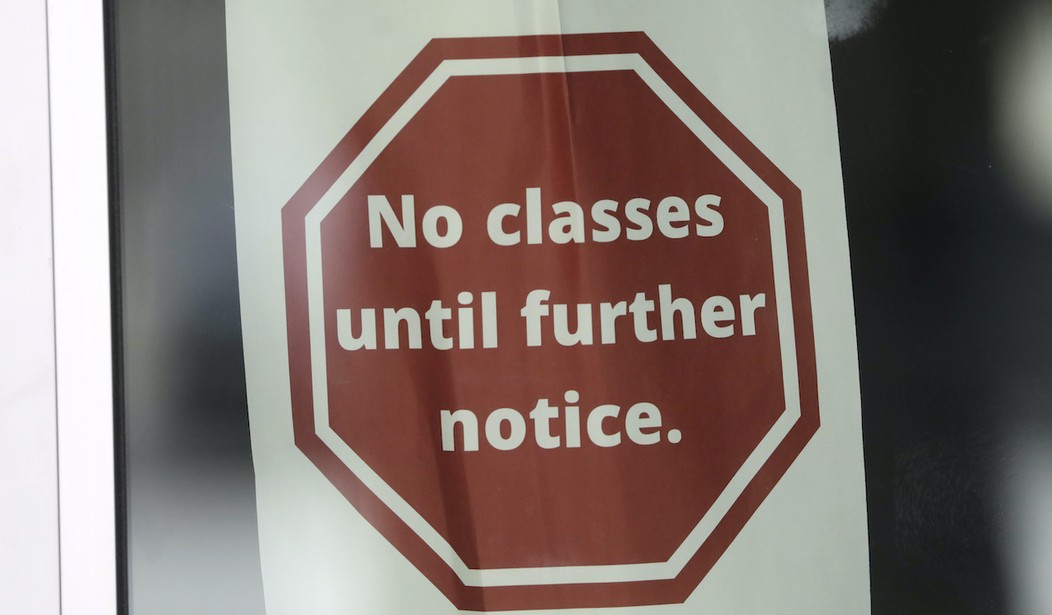So much of the angst over re-opening schools in the Covid era comes down to one issue: individual parents have very little say in school district decisions. This stems from the government having a near monopoly on K-12 education. No other area of life operates like this—not even other levels of education like pre-school or college. The result is that unions and district bureaucrats wield more power than parents or individual teachers.
This imbalance has left millions of students unable to attend school this year. Yet every district includes a sizeable number of parents who want full-time school for their children. In Chicago, home to one of the highest profile re-opening battles, headlines claimed “only” 37 percent of students wanted to return to the classroom. But that represents 77,000 pre-school and elementary students. Doesn’t sound like a number that should be paired with “only.” Those students deserve an in-person option, an option they would have if the system was set up to listen to parents’ voices.
In sharp contrast, private schools have mostly continued to offer in-person education, even in urban areas where most district schools have remained closed. Private schools, in contrast to the public system, have to satisfy the families paying tuition, lest they leave and take their dollars with them. Many private schools have seen increased enrollment this year for that very reason. Parents—and kids—want an in-person option.
The efforts to re-open schools have led parents throughout my home state of Pennsylvania to form Facebook groups with names like “Parents for In Person Education (PIPE),” “PR Back to School,” “Families for Choice,” and “Families for Brick & Mortar.” Similar groups are connecting parents in other regions.
Recommended
But even if parents win the battle to re-open, the root problem will remain: families will still be at the mercy of the system. While it’s certainly getting more attention now, this problem pre-dates COVID-19. Parents know one size doesn’t fit all when it comes to education. Those who can afford another option or who have access to a charter school can find the right fit for their children. But many others are locked in the local district school regardless of whether it works for their kids. For example, almost 80% of Pennsylvania children attend their local district school, but polling last February found only 40% of parents would choose that if cost wasn’t a concern.
For many parents, schools’ Covid responses are making them realize their children often aren’t the priority in the current system. If we let money follow students rather than making students follow the money, the needs of children and families would be prioritized. Then the whims of a few school board members or a superintendent would no longer dictate how children are educated.
Lawmakers are paying attention. Legislation to expand parental choice—through programs like education savings accounts and tax credit scholarships—has been introduced in at least 23 states this year. This would equip parents to provide the best education possible for their children and force government schools to be more student focused—because there would be a financial impact if families leave.
Not surprisingly, the biggest impediment to enacting more choice policies is the "education establishment" that benefits from the current system: teachers unions and the associations of school boards, superintendents, principals, etc. Yes, our tax dollars are used to fund organizations that lobby politicians to prevent families from having educational freedom.
It’s worth noting that public schools in the U.S. spend around $15,000 per student on average. In Pennsylvania, it’s $18,000. Since average private school tuition is around $11,000, it’s clear that expanded parental choice programs would result in additional educational opportunities for children. And where dollars are available, more options and seats will surely pop up. For example, teachers in Florida have opened their own schools thanks to the flexibility of the state’s school choice programs.
It’s understandable that parents are currently focusing their efforts on getting schools to re-open. Their children miss school, and many hate the remote options offered by districts. Parents often need to work outside the home, and not everyone has childcare available with schools closed. Already, school closures have forced hundreds of thousands of women out of the workforce.
But parental choice programs are the foundation of long-term solutions. Only by funding students instead of school systems can we ensure every child has access to great educational options—in the Covid era and beyond.
Colleen Hroncich is a visiting fellow at the Independent Women’s Forum and a senior policy analyst at the Commonwealth Foundation.

























Join the conversation as a VIP Member